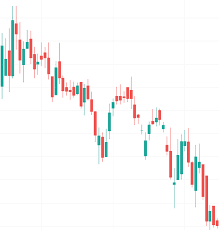Trendlines & Channels: Drawing the Path of Price
Once you’ve learned about support and resistance, the next step is connecting those levels into trendlines and channels. These tools help you see the direction of price and the path it’s traveling on a chart.
📈 What is a Trendline?
A trendline is simply a straight line you draw on a chart to connect multiple highs or lows. If price keeps bouncing higher from a line, it’s an uptrend line acting as support. If price keeps falling from a line, it’s a downtrend line acting as resistance. 👉 Example: Imagine a stock that hits $50, $55, and $60 on three different rallies. If you connect those peaks with a line, you’ve drawn a downward resistance trendline if it keeps rejecting price.
🔺 Uptrend Line
Connects higher lows, showing buyers are in control and pushing price up over time. Traders often buy near the line, placing stops just below it. 👉 Think of it like an uphill path. Every time price stumbles, it lands on the hill and keeps walking up.

🔻 Downtrend Line
Connects lower highs, showing sellers are in control and pushing price down over time. Traders often sell near the line, placing stops just above it. 👉 Think of it like a downhill slope. Every bounce upward just rolls back down again.

📊 What is a Channel?
A channel is formed when price moves between two parallel trendlines. An uptrend channel means price moves higher, bouncing between two upward-sloping lines. A downtrend channel means price moves lower, bouncing between two downward-sloping lines. A sideways channel means price moves flat, bouncing between two horizontal lines. 👉 Picture it like train tracks: the price is the train, moving forward inside the rails.

🧭 Why Trendlines & Channels Matter
1. Visual Roadmap – They show the overall direction of price.
2. Buy & Sell Zones – Traders use the bottom of a channel (support) for buying and the top (resistance) for selling.
3. Risk Management – Easy to know where to place stops (just outside the line).
4. Breakouts – When price finally breaks through a channel, it often leads to a strong move.

📝 Example
Imagine Microsoft stock is trending upward between $250 and $280. Each dip lands near the lower line, and each rally touches the upper line. A trader could buy when price touches $250–$255, set a stop slightly below, and sell near $280. If price breaks above $280, that may signal a breakout to new highs.
🚫 Common Mistakes
Forcing lines to fit your bias instead of actual price points. Ignoring timeframe differences — trendlines on a 1-minute chart are much weaker than those on a daily chart. Expecting perfection — trendlines are zones, not exact prices.
🎯 Quick Takeaways
Trendlines are slanted support and resistance lines. Channels are two parallel lines where price bounces up and down. They help identify direction, trading zones, and breakout opportunities. Always confirm with volume, price action, and larger timeframes. Learning trendlines and channels helps you see the bigger picture on any chart — like drawing the outline of where price wants to go next.
🔑 Next in Charting & Price Analysis: Chart Patterns: Triangles, Flags, and Pennants
